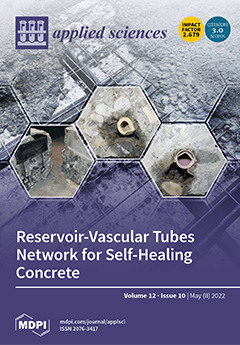Open AccessArticle
Numerical Analysis of the Calcaneal Nail C-NAIL
by
František Sejda, Karel Frydrýšek, Leopold Pleva, Martin Pompach, Josef Hlinka, Marek Sadílek, Zuzana Murčinková, Pavel Krpec, Miroslav Havlíček, Roman Madeja, Jana Pometlová, Oldřich Učeň and Kamila Dostálová
Cited by 2 | Viewed by 3417
Abstract
The presented article investigates the biomechanics of the calcaneal nail C-NAIL
TM by numerical calculations and, partially, experimentally. This nail is widely used in trauma and orthopaedics. A numerical model of implants directly interacting with the bone tissue model obtained from CT scans
[...] Read more.
The presented article investigates the biomechanics of the calcaneal nail C-NAIL
TM by numerical calculations and, partially, experimentally. This nail is widely used in trauma and orthopaedics. A numerical model of implants directly interacting with the bone tissue model obtained from CT scans was calculated. The material properties of the bone tissue can be described by several models; in this work, a non-homogeneous material model with isotropic elements and prescribed elastic modulus was used to provide a more accurate model of the applied force distribution on the individual parts of the implants. The critical areas of the nail and its fixtures were investigated using finite element strength calculations to verify their strength and reliability, contributing to the safety and faster and easier treatment of patients. These analyses suggest that the strength of the calcaneal nail C-NAIL, as well as the stabilization of bone fragments resulting from its use, are sufficient for clinical practice.
Full article
►▼
Show Figures





